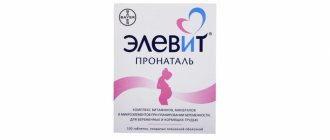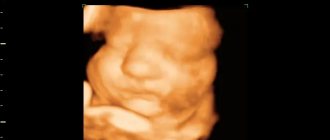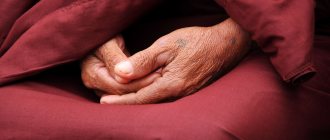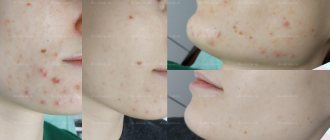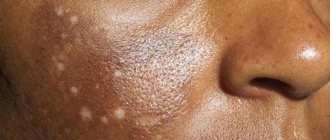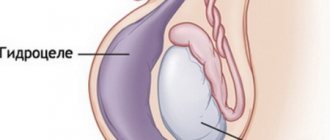In the first days of a baby's life, a newborn's skin may suddenly become covered with small pimples. These pimples can have different appearances - they can be red, white, they can cover certain areas of the skin, they can appear on the face, or on the whole body. In order not to puzzle over why pimples appeared on the face of a newborn, you need to know about the most common causes of their appearance, and, depending on the cause, select treatment. In general, there are acne that require treatment, and there are those that go away on their own.
What is newborn acne and what causes it?
Between two and five weeks of age, small pimples may appear on your baby's face (usually on the cheeks, nose, eyelids, chin and/or forehead). According to statistics, acne of newborns (or infant acne, neonatal pustulosis) occurs in 30% of babies. Experts do not agree on why acne occurs, but it may be due to one of the following reasons:
- inflammation of the skin caused by fungi of the genus Melassezia, which are part of the normal human microflora and colonize the skin in the first weeks after birth
- overactive sebaceous glands on the baby’s skin, caused by the specific action of maternal hormones (androgens)
Pimples on a newborn's face have nothing in common with acne in teenagers.
Symptoms and signs
The first signs can be noticed from the first days of the baby. The peak of manifestation occurs on days 5-7. Hormonal rash looks different in infants. These are mostly red spots with a white head in the center. Pimples may have a yellowish or whitish tint, barely rising above the skin. The rashes are localized mainly on the forehead, nose, chin, ears, and chest area, but in more complex cases they can be on the back and other parts of the body. Closed comedones are few in number, appearing in the form of separate formations. They may merge into small spots. The important point is the absence of itching and pain. Hormonal rash in newborns is accompanied by a number of characteristic signs:
- swelling of the mammary glands in boys and girls;
- swelling of the scrotum area in boys;
- vulvovaginitis or spotting in girls.
When to see a doctor
Hormonal rash is not classified as a disease. It is inherently safe. It may go away in a few days, but not in all cases. It happens that it takes 1.5-2 or even 6 months to completely cleanse the skin of papules. Depending on the state of health, the rash may migrate and periodically worsen. How quickly and when the hormonal rash in infants goes away depends on the efficiency of self-removal of estrogens from the body. Parents should be alerted to the different external signs of a three-week rash, as well as the protracted healing period. Up to a maximum of 1 year, the child’s hormonal levels should return to normal, and all manifestations should disappear. It is necessary to contact a pediatrician or dermatologist at JSC “Medicine” (clinic of Academician Roitberg) in the Central Administrative District if the recovery period is exceeded. A rash due to hormonal imbalance in children over one year old is already equated to pathological conditions.
How to distinguish from allergies
Children have contact and food allergies. They can be identified by location and time of manifestation. Contact allergies occur on the skin only in those places where there was contact with the irritant. An example would be a diaper. In places of contact with its materials along the legs, in folds, on the buttocks, and lower back, rashes appear without clear boundaries. Red spots can merge into large areas of the lesion. Allergies are also characterized by a feeling of itching and, accordingly, anxiety in the child. This may be accompanied by a runny nose, conjunctivitis, moodiness, etc. Food allergies occur within 24 hours after consuming an allergenic product. It appears in the form of rough spots on the cheeks, reminiscent of an unhealthy blush. Hormonal rash in a child does not have such manifestations.
How to distinguish from infection
Measles, roseola, chickenpox, rubella, scarlet fever are diseases that are best dealt with in childhood. Each of them is characterized by a certain location of the rash, accompanied by specific symptoms. Hormonal acne has nothing in common with these diseases. It occurs without changes in body temperature, changes in appetite or sleep patterns. The infection covers a large area of the skin and can be localized in different places at the same time. Infectious rashes are characterized by the following:
- clear boundaries of lesions;
- the rash does not have the appearance of closed comedones (small wen);
- There is an increase in temperature and poor health.
How to get rid of acne in newborns
There are no home remedies to get rid of newborn pimples on the face. You need to wait until they disappear on their own. Typically, newborn acne goes away in about three to four months without leaving any traces. Here's how to take care of your baby's delicate skin if he has pimples:
- Wash him every day with warm water and mild baby soap, then pat dry.
- Try to avoid any rubbing of the affected areas of the skin, as this can make the process worse or even lead to infection.
- Do not apply lotions or oils to your baby's face.
- There is no need to follow a diet, since neonatal acne has nothing to do with the mother’s diet
What does a newborn look like?
If the birth goes well, immediately after the birth of the newborn baby, the mother is placed on her stomach. His skin can be bright pink, or it can be pale, his hands and feet have a bluish tint. This scares young mothers if they have heard or read something about hypoxia and cyanosis before. But if the doctors in the delivery room are calm and do not provide resuscitation measures, then this is a variant of the norm. A healthy child can be like this in the first minutes of life. In addition, the newborn's body is covered with vernix - the baby looks as if it has been smeared with cream cheese. And this is also normal, although unattractive. Lubricant plays an important role in protecting the skin from germs, so the baby’s skin is only lightly blotted without being completely wiped.
5-10 minutes after birth, the newborn’s skin becomes bright pink, almost red. This is a normal condition - physiological erythema . The air pressure is less than the pressure of the fluid in which the baby was in utero. When the skin ceases to experience resistance, blood actively flows to it. The body gets used to the new form of life. Gradually, the blood vessels will narrow, and the skin will become its usual pink color by the end of the week in full-term babies and after 2-3 weeks in premature babies.
When to see a doctor
If you are concerned about your baby's complexion or if you are concerned that the condition is not improving after three to four months, consult your pediatrician. Your doctor may prescribe a special cream to treat acne in a newborn. Do not use over-the-counter creams or any other medications for acne without first consulting your pediatrician as they may harm your baby. Contact your pediatrician if your newborn has any of these symptoms:
- blisters on the skin
- peeling skin
- heat
- uncharacteristic tearfulness
- poor appetite
Hormonal rash in babies: treatment
By medical standards, hormonal rash in newborns is not considered a disease. This means that this temporary phenomenon does not require special treatment. It is necessary to show the child to a pediatrician or dermatologist to confirm the diagnosis, but you should not self-medicate. At JSC “Medicine” (academician Roitberg’s clinic), doctors will conduct an examination and, if necessary, do laboratory tests (scraping, smear). During the period of appearance and exacerbation of rashes, it is important to follow hygiene rules. Under no circumstances should you remove closed comedones to prevent infection. Otherwise, hormonal acne may progress to the stage of suppuration. This is already considered a serious case, requiring special care. A rash due to hormonal imbalance after birth appears and will go away on its own. The following procedures are not recommended:
- dry papules with alcohol solutions;
- smear with iodine or brilliant green;
- wipe with herbal infusions;
- apply baby cream and ointments;
- use adsorbents;
- give antibiotics;
- use powder with talcum powder, etc.
Useful tips for parents
A hormonal rash on a newborn’s face or body, if properly cared for, is not a cause for concern. It is recommended to follow simple rules. They consist of daily water procedures, the need to take air baths, and it is also necessary to protect the child from overheating. Sweaty skin will complicate the healing process and can cause inflammation in the affected areas. Hormonal rash is considered a physiological phenomenon in babies, but proper care will help speed up the cleansing of the skin. To avoid causing additional irritation, use hypoallergenic powders for washing. Another important point is that a child can scratch himself. Trim your nails carefully or use special anti-scratch mittens.
Infantile hemangioma
Hemangioma is a benign tumor of endothelial cells (endothelium is the inner lining of blood vessels). It may be congenital or appear at 1-2 weeks of life. Superficial hemangiomas are bright red and protrude above the surface of the skin. Deep - blue-purple, sometimes warm to the touch. The element size ranges from a few millimeters to an entire anatomical area (hand, buttock, etc.). In the first 5-6 months, the hemangioma may increase in size and become brighter, then the growth ends and spontaneous regression begins.
Up to 90% of hemangiomas can resolve without treatment.
In this regard, surgical treatment is no longer used routinely. The child is observed by a pediatrician and a surgeon; if hemangiomas are located on the face and neck, in the genital area and near large vessels, conservative treatment is prescribed. The operation is indicated only if it is ineffective.
Vascular abnormalities
Congenital anomalies of vascular structure are varied
- A simple nevus is a capillary anomaly. It appears as a pale pink spot or several small spots. The common name “stork bite” or “angel kiss” arose due to its location on the back of the neck and head, on the forehead, bridge of the nose and upper eyelids. The spots fade by the age of two, but can appear when crying or physical activity. No treatment required.
- Port wine stain or flaming nevus. A dark red spot that looks like a hemangioma. It may be one of the manifestations of pathological syndromes. Lasts for a long time. Treatment is not necessary, but can be done if the spot creates a cosmetic defect.
- Venous anomaly - blue-violet painful nodules under the skin. They can also masquerade as a hemangioma. Occur alone or in combination with other anomalies. The danger lies in the possibility of thrombosis of the altered veins. Treatment consists of wearing compression clothing and using aspirin to prevent blood clots. Surgical excision is possible.
- More rare lymphatic, arteriovenous and combined anomalies are found as part of various pathological syndromes.
Seborrheic dermatitis
Appears in infants soon after birth and lasts up to a year. Yellow scales and peeling are most often located on the scalp and behind the ears, but can also be in other folds - axillary, elbow, inguinal. In everyday life they are called “milk crusts”. Because of its similarities to atopic dermatitis, seborrhea is sometimes considered a manifestation of allergies. The causes of this condition are not fully understood, but the relationship with allergies has not been identified.
Seborrhea goes away without treatment, in most cases in the first year of life. Unlike atopic dermatitis, the rash does not cause itching and does not cause discomfort to the child. If for the sake of aesthetics you want to get rid of seborrheic crusts, before bathing the baby’s head is lubricated with oil and then combed out with a soft comb.
In doubtful cases, when seborrhea is located on the body, it makes sense to consult a doctor to clarify the diagnosis.
Diaper dermatitis
The distinctive feature of this rash is that it appears only in the area under the diaper, other areas of the body remain clean. The reason is increased humidity and irritating feces.
The rash is found in the buttocks, thighs, lower abdomen in the form of individual elements or continuous areas of changed skin. The elements of the rash are varied: red spots, bumps, pustules or peeling.
To alleviate the condition, you need to change the diaper and wash the baby immediately after bowel movement. While changing clothes, you can arrange air baths, that is, leave the child to lie naked, you can cover it with a regular dry diaper. Lubricate the skin with a special diaper cream.
Change the diaper every 3 hours, even if it is only slightly full. More often when very full. If these measures are ineffective, you should consult a doctor. Local glucocorticoid agents may be needed.
Marbled leather
During the first month of life, a baby's skin sometimes looks marbled. A uniform mesh pattern of white, purple, and reddish spots is the reaction of skin vessels to cold. Therefore, this phenomenon is most often noticed during swaddling. If the marbling is symmetrical and disappears when warmed, then there is no cause for concern. In other cases, it is worth discussing this symptom with your pediatrician so as not to miss the early diagnosis of diseases of the heart, lungs or skin itself.
Erythema toxicum
By the second or third day of life, 70% of full-term newborns develop a small red rash on the skin. Rarely, this condition occurs in premature babies. First, spots appear, and within an hour a yellow bump 1-2 mm in size forms in the center. Elements of the rash are located on the face, torso, arms and legs, and can merge with each other. The cause of erythema toxicum is unknown, but the rash goes away without treatment in 1-7 days and is not dangerous.
If the clinical picture is atypical or other symptoms are present, the doctor will prescribe additional examination to rule out other causes of the rash, such as infection.
Diaper rash
A more serious skin reaction to overheating is diaper rash. Occurs in natural folds. It looks like redness, sometimes with weeping and erosion. With a long process, a bacterial or fungal infection may develop, then the surface of the affected skin is moist, bright red, with clear or purulent discharge. Prevention measures are the same as for prickly heat.
The skin in the folds is treated with powders. If normalizing the microclimate and caring for the newborn does not lead to a reduction in diaper rash, you should see a doctor. If complications occur, antibiotic therapy or topical steroid ointments may be needed.
Peeling
On the second or third day after birth, the newborn’s skin begins to peel off. Peeling is observed in everyone, but to varying degrees of severity. Most severe if the baby is post-term. The reason is the same restructuring of the body to exist in the air. The skin loses moisture, and the top layer gradually peels off. Physiological peeling does not require treatment and goes away on its own within a few days.
If the peeling is profuse and leads to deep cracks, the skin is lubricated with special moisturizers - emollients. In case of pronounced peeling, it is necessary to exclude congenital skin diseases such as ichthyosis, hyperkeratosis and others.
Causes
- Excess hormones from the mother that are still present in the baby
- Restructuring the child's hormonal system
- Excess secretion from the baby's sebaceous glands
- Blocked skin pores and follicles
- Excessive proliferation of lipophilic yeast leading to inflammation
- Hormonal imbalance (in teenagers)
- Gastrointestinal problems (in teenagers)
Neonatal and juvenile acne develop during periods of physiological natural hormonal changes. Infant acne is rare, mainly in boys; rashes become noticeable from the second half of life and continue to appear for 2-3 years, sometimes up to 5 years. In all forms, additional exogenous provoking factors can play a significant role.
